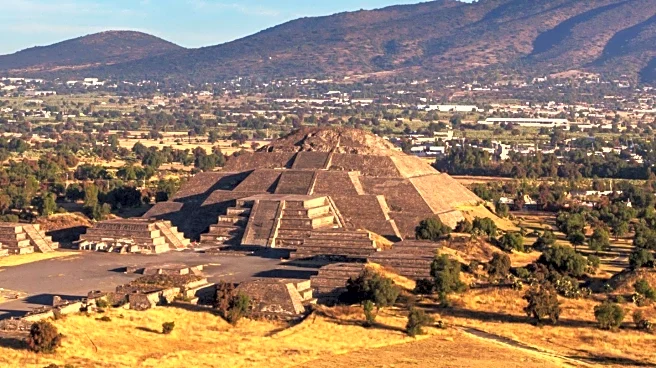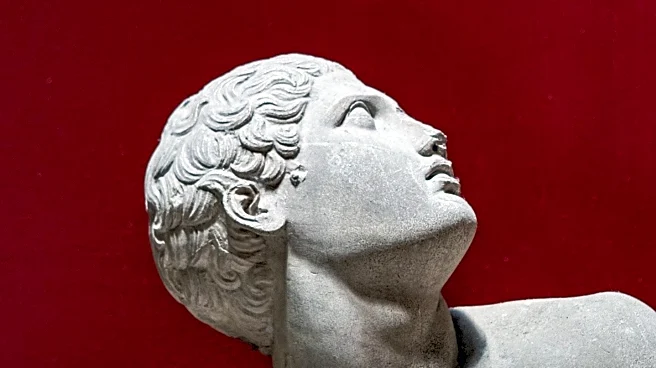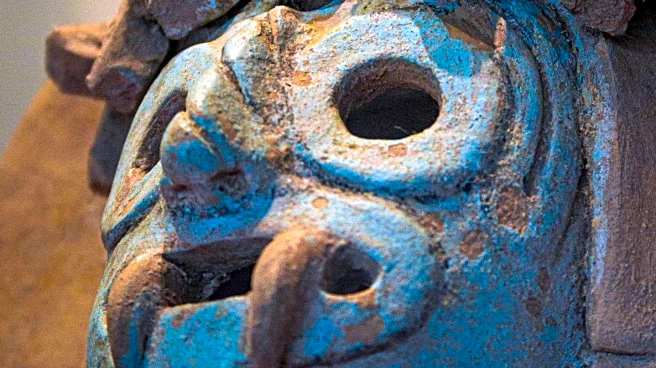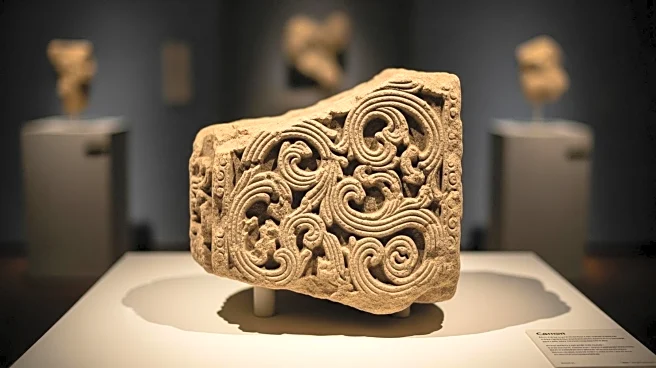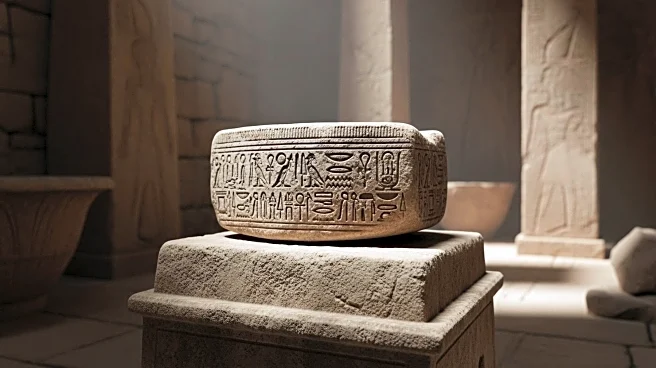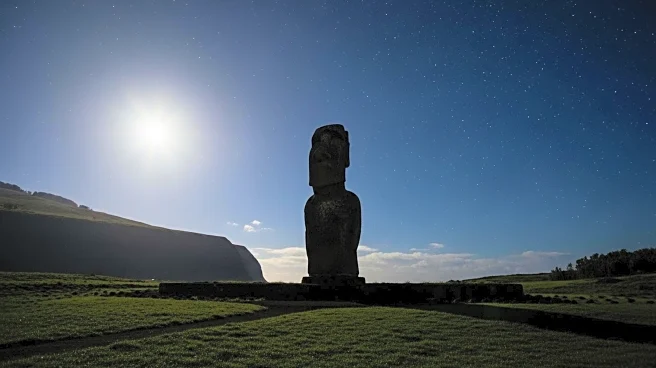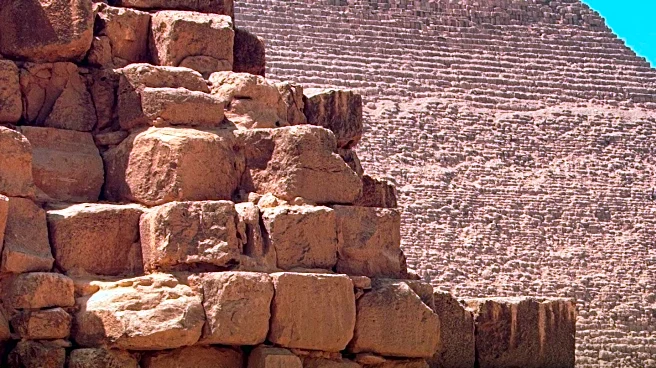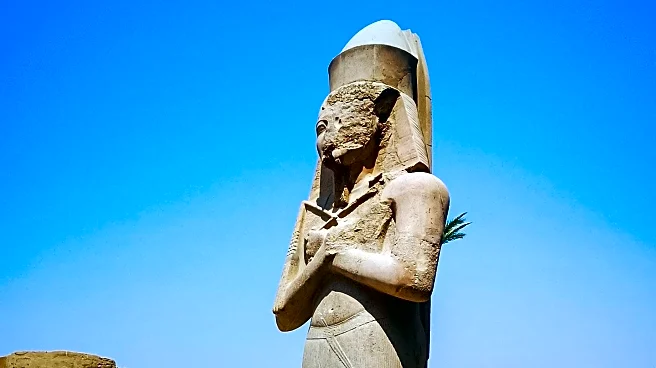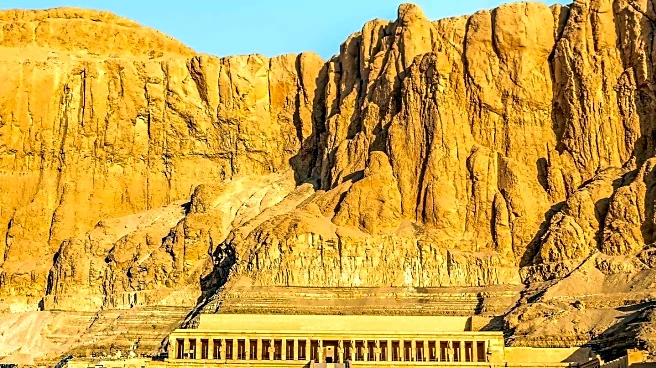What is the story about?
What's Happening?
Researchers from the University of Copenhagen have analyzed artwork from the ancient city of Teotihuacan, suggesting it may represent a rudimentary language that evolved into the Aztec language. The study, led by Christopher Helmke and Magnus Pharao Hansen, aims to decipher this 'lost language' to uncover clues about Teotihuacan's builders and their mysterious disappearance. The team reconstructed a predecessor to the Aztec language Nahuatl, using it to interpret logograms found in murals and pottery. This discovery could reshape understanding of Mesoamerican cultures and provide insights into the city's abandonment around 600 AD.
Why It's Important?
Deciphering the language of Teotihuacan could significantly impact the understanding of Mesoamerican history and cultural evolution. It may reveal connections between ancient civilizations and the Aztecs, offering insights into migration patterns and cultural exchanges. The study highlights the importance of linguistic analysis in archaeology, potentially leading to breakthroughs in understanding ancient societies. This research could also influence contemporary perspectives on cultural heritage and identity, emphasizing the interconnectedness of historical narratives.
What's Next?
Further research is needed to expand the understanding of Teotihuacan's language and its implications for Mesoamerican history. The discovery may prompt additional archaeological investigations and interdisciplinary studies, involving linguists, historians, and archaeologists. As more artifacts are uncovered, researchers may refine their interpretations and strengthen the connection between Teotihuacan and the Aztecs. The findings could inspire new educational initiatives and public interest in ancient civilizations, fostering appreciation for cultural heritage and historical inquiry.
AI Generated Content
Do you find this article useful?
